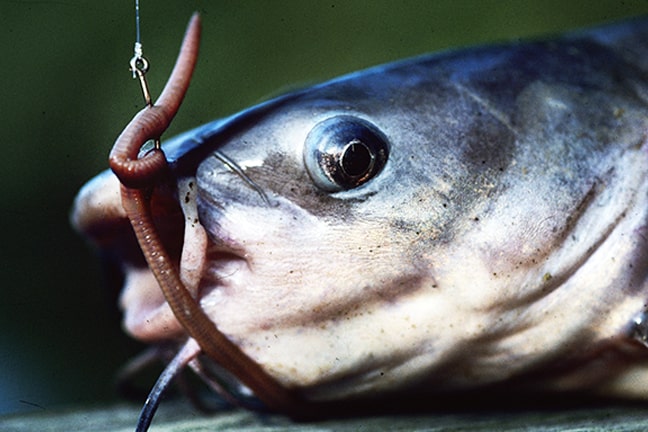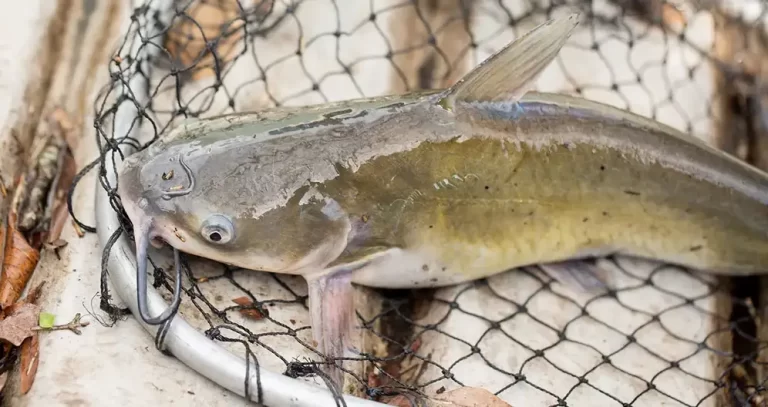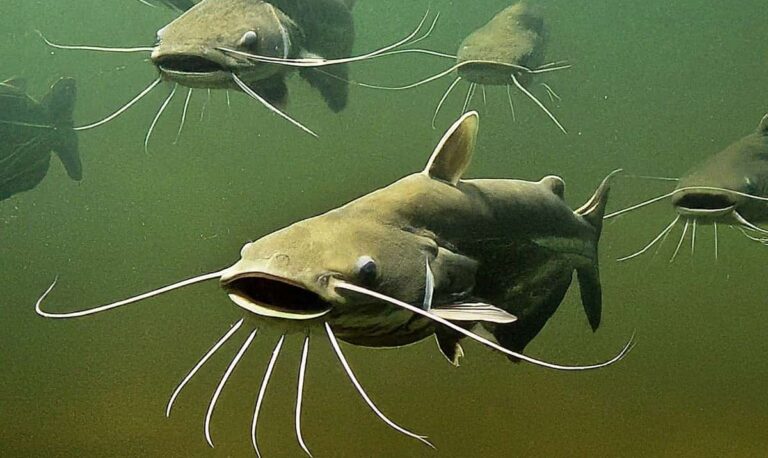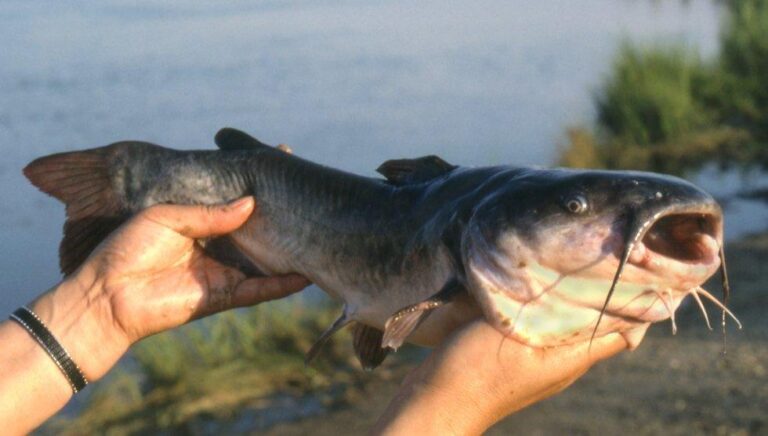How to Catch Catfish from the Bank
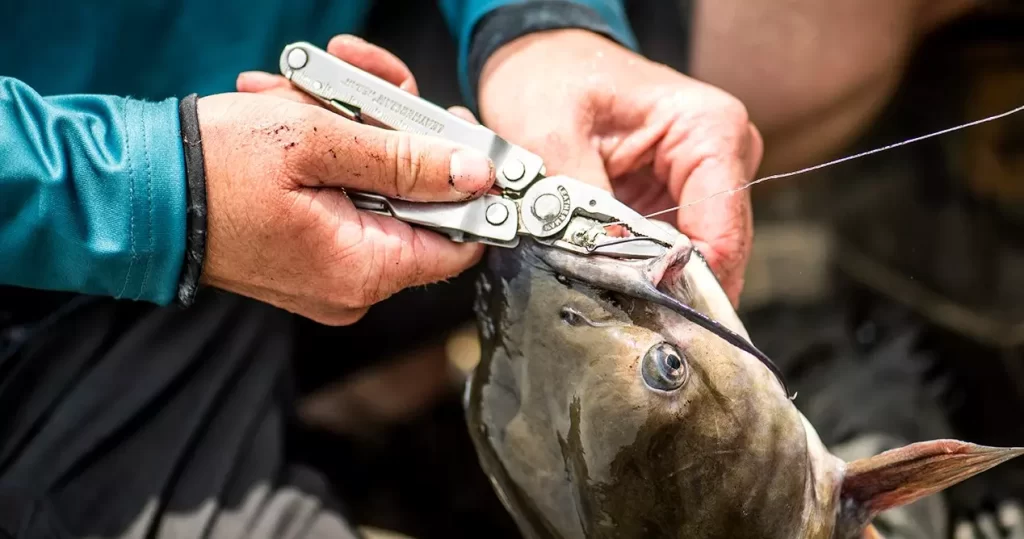
The vast majority of catfishing is done from the bank. I actually think that the bank is better for catfishing than a boat.
Catfishing is done in one spot for an extended period of time, so a boat actually doesn’t offer as many benefits as it usually would.
But the question is, how do you fish for catfish from the bank?
Can You Catch Catfish Off the Bank?
Yes, of course. Bank fishing for catfish is more popular and often more effective than fishing from a boat or kayak.
I myself never catfish from a boat because it is too much of a hassle and isn’t any better than bank fishing.
Where to Fish on the Bank
Without the luxury of fancy bass boat and fish finder, you might be thinking, where do I fish?
Try to find some drop offs or trench type bottoms in your lake or pond. Catfish will cruise these depth changes looking for food.
Grass lines are also a reliable place to find catfish. My favorite place to fish is right outside a cove area.
Cast right outside the cove and you will have lots of success.
Bank Success by Catfish Species
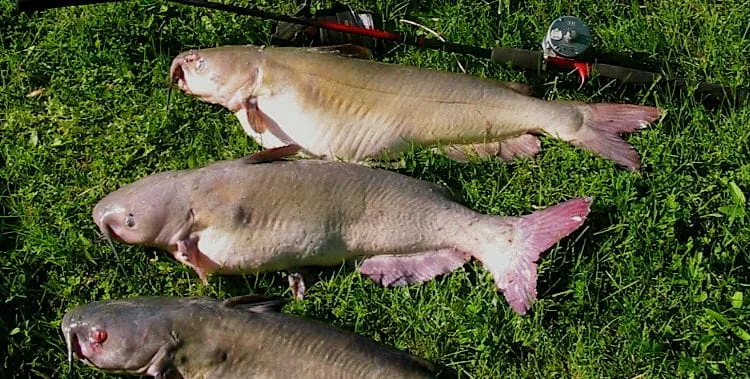
Channel catfish will be the easiest to catch from the bank. Channel catfish are highly populated in small lakes and ponds where bank catfishing is most popular.
Blue catfish can sometimes be found in these small bodies of water, but are typically only located in large rivers and lakes.
Flatheads are found in river systems where bank fishing is difficult.
This doesn’t mean that you can’t catch river catfish from the shore, but channel catfish will be easiest.
Summer Catfishing from the Bank
During the hot summer months, the nighttime will be your best bet. Catfish stay in the deeper, cooler waters during the daytime and become very hungry and aggressive at night.
The catfish will be very aggressive on summer nights, so use either live bait or big, bloody baits to draw their attention.
Can you catch catfish during the day? Yes, of course you can. However, 4-5 hours after the sun goes down will be the time of day that catfish are most active.
Bank Fishing for Catfish at Night
Like I said, during the summer, catfish will do most of their feeding at night. They will move up into very shallow waters in search of a meal.
Keep your casts within 50 ft. of the bank because this is where the catfish will spend most of the time and be on high alert for food.
Using glow in the dark rods or shore lights can also help you out a lot.
Winter Catfishing from the Bank

This is the exact opposite as summer fishing. Fishing during they daytime will be more effective.
Catfish move into shallow waters during the daytime to warm up in the sun.
Since the water is cold and catfish metabolism is slow, stay away from live bait.
Catfish don’t want to waste energy chasing after prey. They just want an easy, hardy meal.
Best Catfish Rigs for Bank Fishing
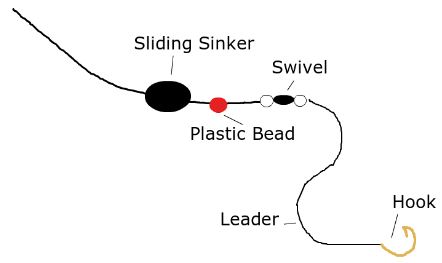
I only ever use one rig when I am bank fishing for catfish. That rig is the slip sinker rig.
This is by far my favorite catfish rig for pretty much all scenarios. There is one specific advantage of the slip sinker rig for bank fishing.
That is that the weight stays anchored in one place while your bait can be dragged freely.
This helps when catfish grab your bait and keep swimming towards the shore. Imagine the catfish grabs your bait and keeps swimming shallower.
The line will tug straight out in the direction of your cast no matter which direction the catfish is swimming.
This helps prevent the catfish from swallowing the hook or eating your bait without you knowing.
How to Catch Catfish from River Bank
This can a bit more difficult. River banks are often full of vegetation, steep rock banks, or cliffs.
This makes much of the shoreline inaccessible for fishing. But, assuming you do have access the the shore, step one is knowing how to read the river.
Rivers hold lots of fish in some areas and almost zero fish in others.
You will need to use bigger, heavier, and stronger gear to counter against the current.
Bank fishing from a river is tuff, but can catch you monster catfish.
What is the Best Line for Bank Catfishing?

The line setup I usually use is braid with a monofilament leader. Since I use a slip sinker rig, this is very easy.
I put the sinker on the braided mainline and tie my circle hook to the leader line below the swivel.
When you are catfishing, there is potential for catching and having to fight really big fish.
To fight big catfish, you need heavy pound test line and lots of line on the spool. This can only really be accomplished with braid.
And since the line is just sitting on the bottom, you don’t have to worry about the catfish seeing it and getting spooked.
Chumming for Catfish from the Bank

First and foremost, you need to make sure that this is legal to do in your state. Many states and cities have laws against chumming.
If it is legal, than by all means, utilize it. I don’t like chumming with lots of real meat or food. This is for two reasons.
First, if you chum with tons of real bait, then the catfish will have a hard time finding your bait with the hook in it amongst all the chum.
Second, it is expensive. If you have to buy tons of extra bait to chum, the bill adds up.
I will chum with blood or store bought scents that are made for chumming.
Chumming can really help when fishing from the bank where you don’t know exactly where the catfish are, and it can even help grow the catfish in your pond a little bigger.
Key Points
- Bank Fishing Superiority: Despite the allure of boats, bank fishing for catfish is often more effective due to the catfish’s tendency to stay in one spot for extended periods.
- Prime Bank Fishing Locations: Look for drop-offs, trench bottoms, and grass lines for successful bank fishing. Cove areas are particularly productive.
- Catfish Species and Bank Fishing: Channel catfish are most commonly caught from the bank, with blue catfish typically found in larger bodies of water and flatheads in river systems.
- Seasonal Considerations: Summer nights are ideal for bank fishing when catfish are aggressive. In winter, daytime fishing is more effective as catfish move into shallow waters to warm up.
- Optimal Rigs and Lines: The slip sinker rig is recommended for bank fishing, allowing the bait to move freely while keeping the weight anchored. Braided mainline with a monofilament leader is preferred for its strength and sensitivity.
- Chumming Considerations: Check local regulations before chumming. Utilize store-bought scents or blood to attract catfish without overwhelming the area with bait.
FAQ
What is the Best Time of Day for Bank Catfishing?
The optimal time for bank fishing depends on the season. During the hot summer months, catfish are more active at night. Conversely, in winter, daytime fishing when catfish move into shallower waters to warm up can yield better results.
What is the Best Line for Catfishing?
Braided mainline with a monofilament leader is often preferred for its strength and sensitivity, particularly when targeting large catfish. This setup provides the necessary durability to handle the powerful fights that catfish are known for.
How to Adjust to River Fishing?
Bank fishing in rivers can present unique challenges due to vegetation, steep banks, or cliffs. Using heavier gear to counteract the current and understanding how to read the river for optimal fishing spots are crucial for success in riverbank fishing.
Tying this Off
Bank fishing for catfish is the favorite way of many to fish for catfish.
You don’t need to go through the hassle of putting a boat in the water or driving all around a huge lake in search of catfish.
Just pull out a chair, put your bait in the water, kick back, and relax. Just let the catfish come to you.

